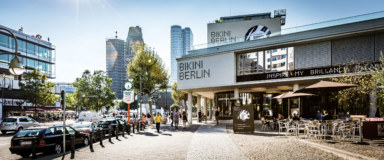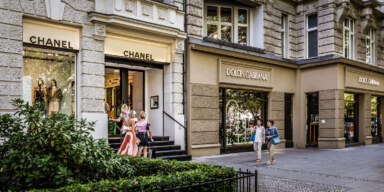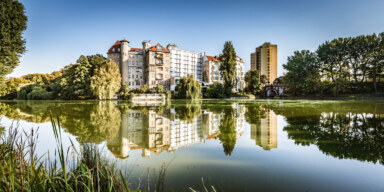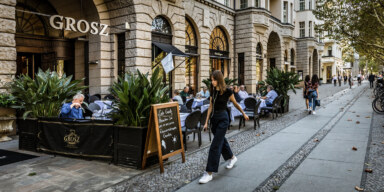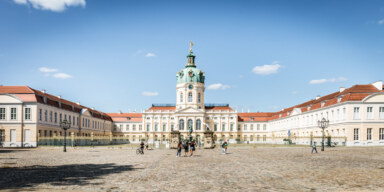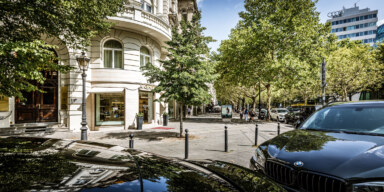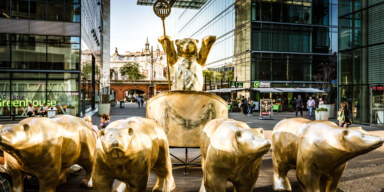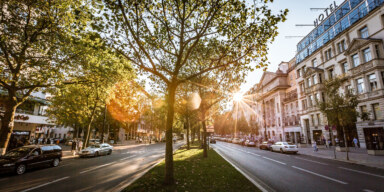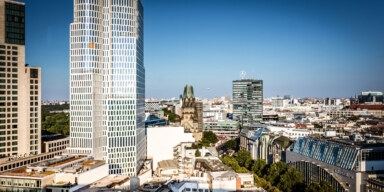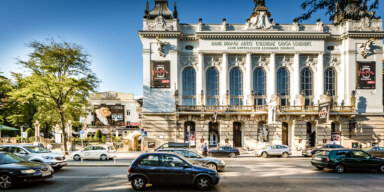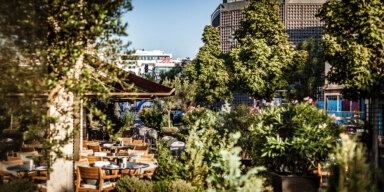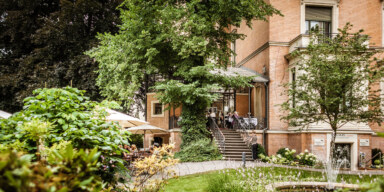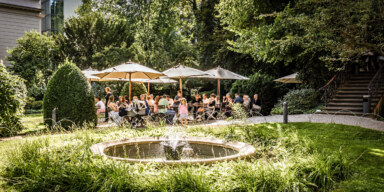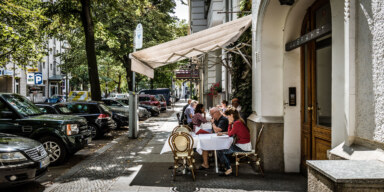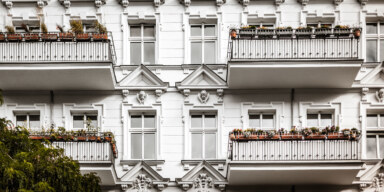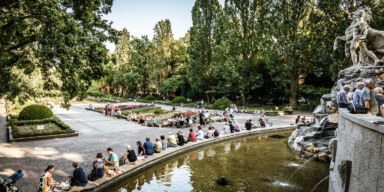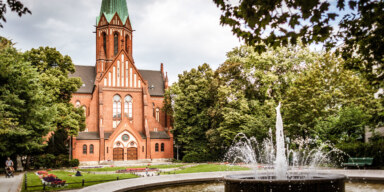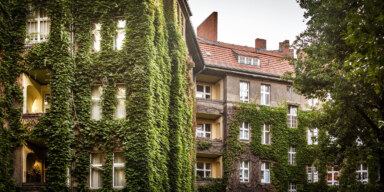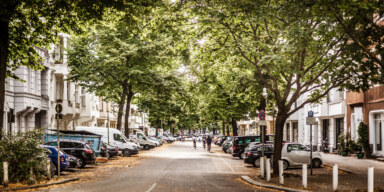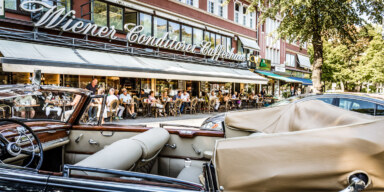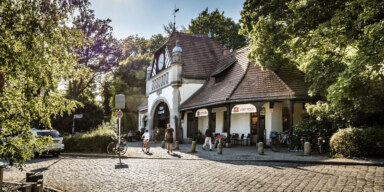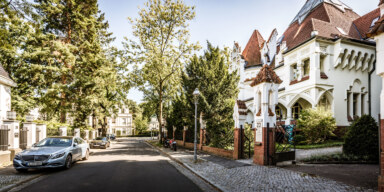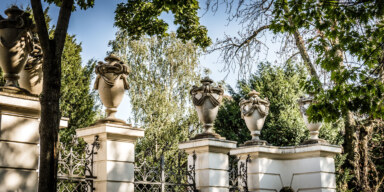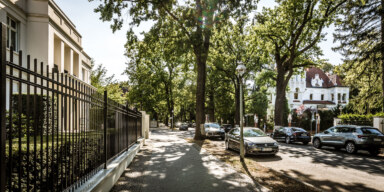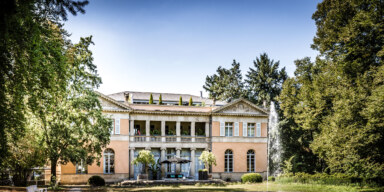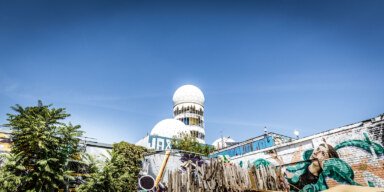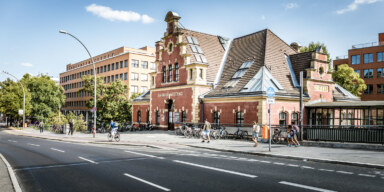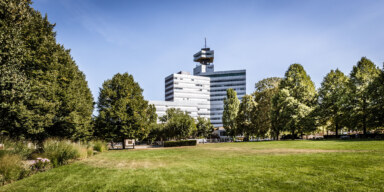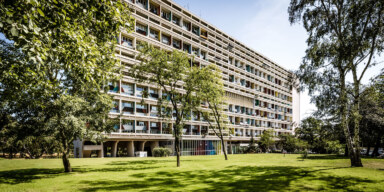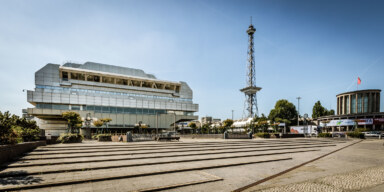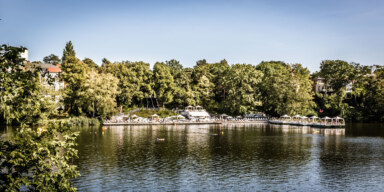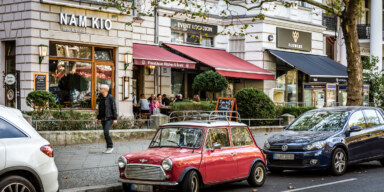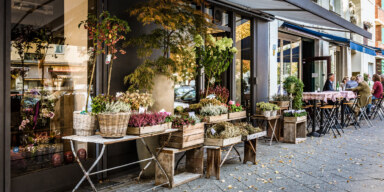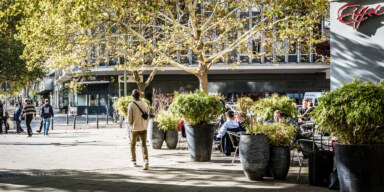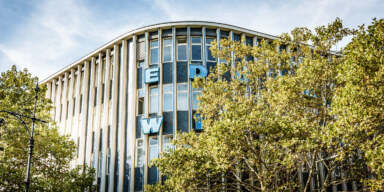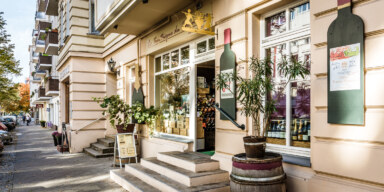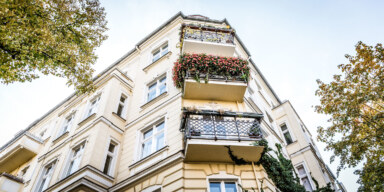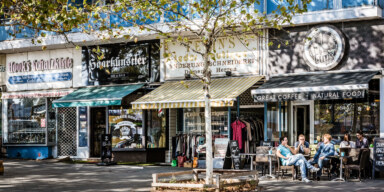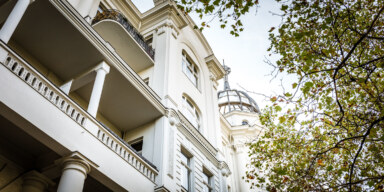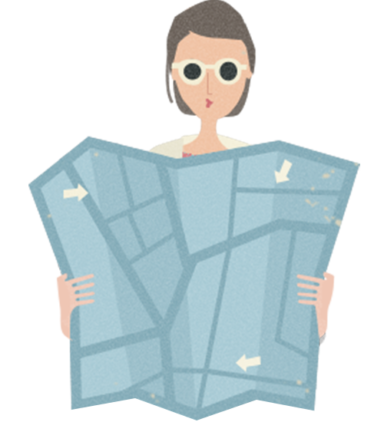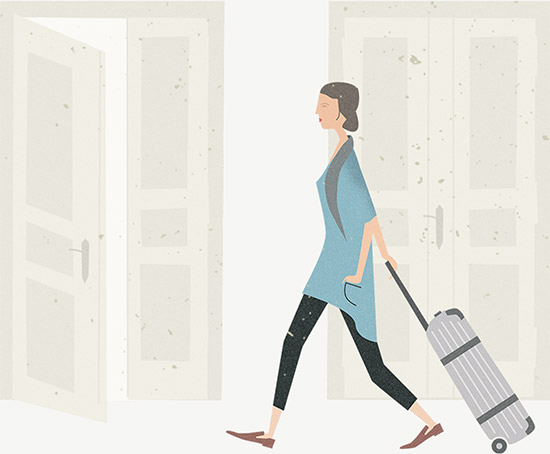Charlottenburg
The royal one
Charlottenburg and Wilmersdorf are now deemed Berlin’s re-emerging boroughs, after a period of impressive economic catch-up of the East and Berlin Mitte. Given their central location, both districts have excellent transport connections. There is a vast choice of furnished apartments, ranging from opulently stuccoed old buildings to minimalist studio flats. Lovers of typical Berlin architecture are sure to find a suitable home here. Besides its Grunewald luxury villas the district has many attractive and, above all, affordable old-build flats. The ambiance is middle-class and easy-going. Single-resident apartments on Lake Lietzensee are particularly popular. Small in size and offered at a moderate rent, they have everything you need for a good start in Berlin.
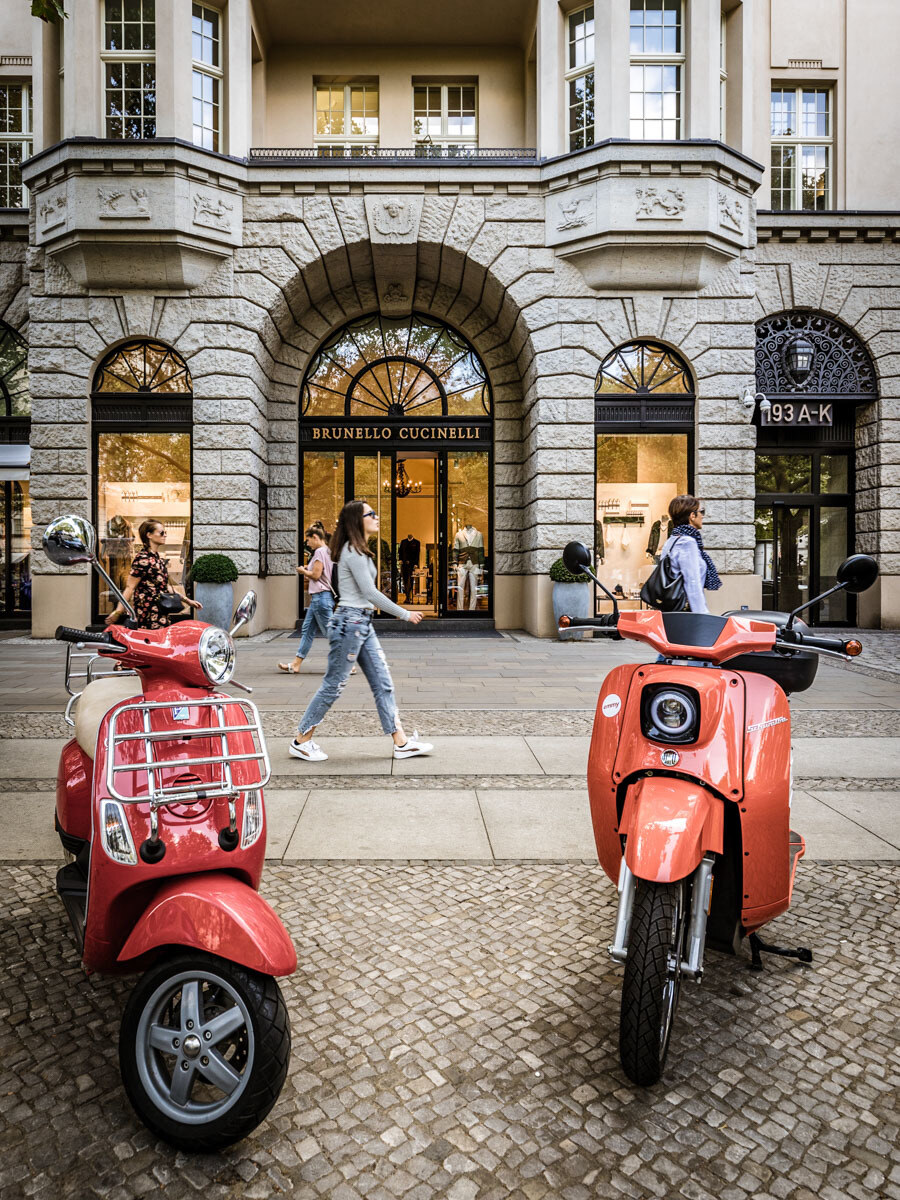
» We’re sorry we are unable to offer you the Prussian kings’ bedrooms, but coming home has in its portfolio a selection of charming properties near the palace. «
At the centre of it all is the Palace. Initially, the “Lietzenburg“ was meant to be no more than a little pleasure palace on the outskirts of Berlin, built for Sophie Charlotte, the consort of Prince Elector Frederick III, and later the first Prussian queen. A subtle woman, smart, sophisticated, personal friend of the universal scholar Gottfried Wilhelm Leibnitz and an accomplished harpsichordist. In her reign, philosophy and the arts flourished. Operas, Singspiel, ballets made the baroque palace a home of the muses, with its garden serving as a stage. After her premature death in 1705 the king renamed the castle and the surrounding small town “Charlottenburg” in her memory. A royal residence that was constantly extended and altered, it is today Berlin’s largest surviving baroque palace. Its magnificent park was the first French garden to be planted in the German-speaking world. At 55 hectares it is twice the size of the Jardin du Luxembourg in Paris, a green oasis complete with badminton courts, winding paths and some romantic spots for Sunday-afternoon picnics. Schloss Charlottenburg was inhabited by Frederick Williams I to IV and Frederick the Great, with varying degrees of pleasure. How they decorated their homes can be seen today on guided tours. Frederick the Great (“Old Fritz”) later had a more comfy home built for himself in Potsdam - Sanssouci. Today, right across from the Charlottenburg palace, in one of the officers’ quarters, is the Berggruen art collection full of iconic masterpieces by Picasso, Klee and Matisse. Charlottenburg is the city’s crown jewel, with a sparkling display of the Prussian kings’ crown jewels. And for those who want to crown themselves, the museum’s shop has a replica – at the modest price of 770 euros. coming home, while not being able to offer you the Prussian kings’ bedrooms, has in its portfolio a selection of charming but more modest properties near the palace. We’re sorry we are unable to offer you the Prussian kings’ bedrooms, but coming home has in its portfolio a selection of charming properties near the palace.
Berlin’s international reputation as a party capital is owed to its innumerable bars. Hipster or elegant, classic or wicked. High above the city, drinks are served at the Monkey Bar on the 10th floor of the “25 hours Hotel Bikini Berlin”. Be impressed not just by the cocktails but also by the stunning panorama. The roof terrace offers a magnificent view of the entire city. You can’t get more Berlin.
The day goes, the jungle comes: “Journey into the night“ is the name of a bar on Savignyplatz. A place where the under-40s meet up for after-work drinks between stuffed animals and neon light installations. Late-night parties offer excellent cocktails and music mostly with a live DJ.
One of Europe’s top jazz clubs is the A-Trane in Charlottenburg. The name is a pun on John Coltrane and the Duke Ellington classic, “Take the A-Train”. The A-Trane was awarded the title of best jazz club in Germany. In a laid-back living-room atmosphere, the club features big international names such as Herbie Hancock, Lee Ritenour, Diana Krall, and of course Berlin’s own Till Brönner. Also part of the club is a jazz café, a popular place to meet before and after concerts.
Besides being a popular nightlife spot, Savignyplatz is also a sought-after residential area. Situated not far from Kurfürstendamm, it has a number of charming period buildings with majestic staircases and wrought-iron balconies. coming home offers a fine selection of furnished apartments all around Savignyplatz and its delightful adjoining streets, even though the rents are not exactly low.
Round the corner between Savignyplatz and Kurfürstendamm there is a fiendishly tempting breakfast place called What do you fancy, love? The name stands for Charlottenburg’s best smoothies and tastiest bagels. Non-stop juicing. The home-made muesli is absolutely scrumptious and will convince any member of the healthy-eating community. Freaky Fresh or Eat Me: there is no healthier way to start the day.
» Round the corner between Savignyplatz and Kurfürstendamm there is a fiendishly tempting breakfast place called What do you fancy, love? The name stands for Charlottenburg’s best smoothies and tastiest bagels. «
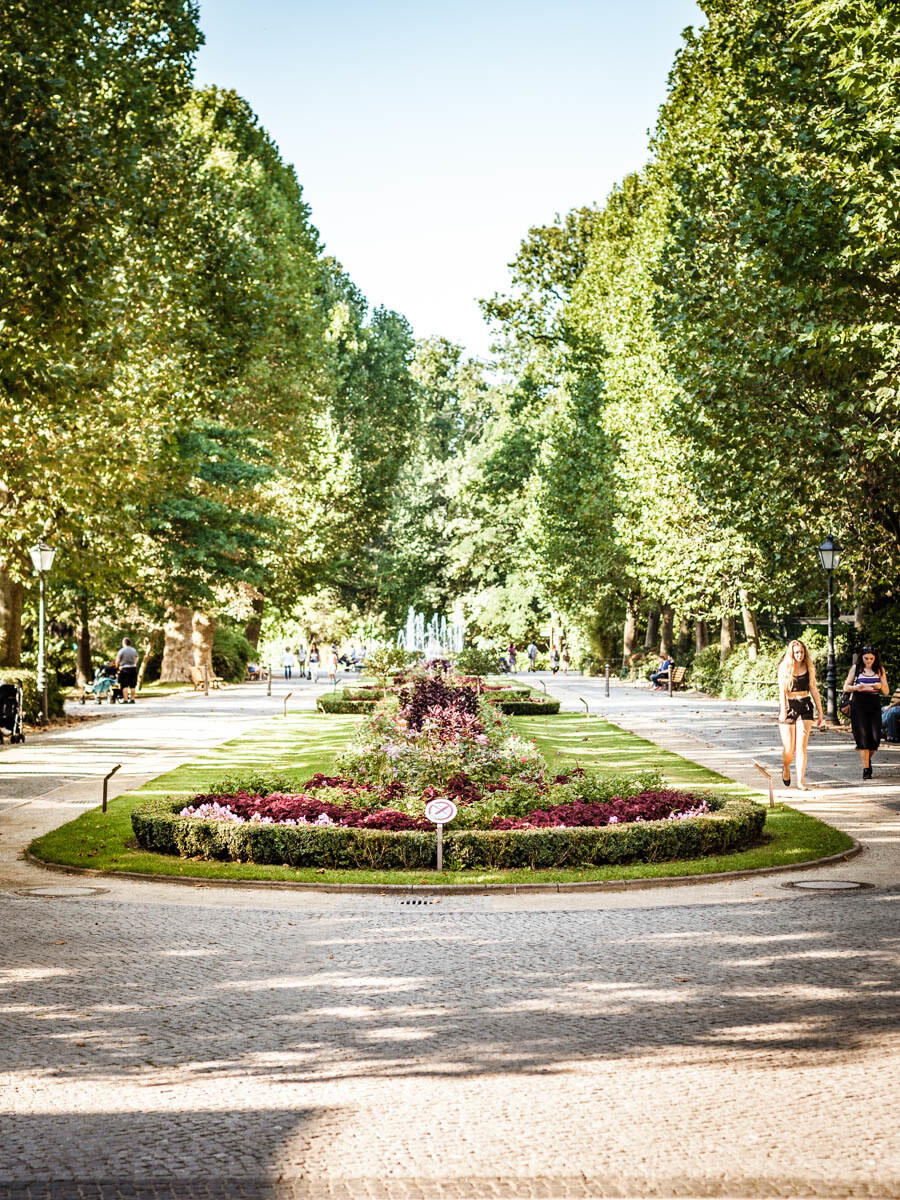
Wilmersdorf
The western one
Berlin, a world city. Always on the go, open day and night. New horizons, turning and churning, walls falling every day. Old-style charm meets modern times. Five continents in a single street, and yet it feels like a village. Take Wilmersdorf. A morning espresso at Ludwigkirchplatz, summer sun twinkling through the sycamore trees, I want to embrace the air. The day belongs to me, and so does the entire city. People without the proverbial “Suitcase in Berlin”, get ready for a flat-hunt. A rented apartment. Ideally furnished, on a temporary basis. At coming home you will find the most attractive furnished apartments in town. Free from long-term rental commitments and free to be captivated by Berlin. We will turn you into a genuine Berliner.
Berlin is a 360 degree experience. Barefoot in the Grunewald forest, patent-leather shoes at the opera house. Paul Klee at the Berggruen art gallery and “Plat du jour” at Café Grosz. Kurfürstendamm, a boulevard of self-enactment. Under the legendary Berlin sky, the garden of Café Einstein, where Grüner Veltliner white wine meets fresh asparagus from Beelitz .. And after a private viewing in a Fasanenstraße art gallery, nip across to “Florian’s” on Savignyplatz. That guy in the corner, well, isn’t he … exactly. Berlin is known for its discretion. But the applause is all the noisier after the first performance. Also, consider a quick visit to the Literaturhaus, not necessarily for a poetry reading but more in the spirit of Alfred Polgar’s famous line:” A café is a place for people who want to be on their own, but in company.” Berlin is great company.
Berlin’s shopping paradise is in its side streets. Step behind H&M and discover the essence of high-street retail: the milliner, the chocolatier. Second-hand in the basement, first-flush in the tea shop. Inspired individualism, streets full of start-ups. The new beside the old, the second-hand bookshop, a “dead poets club” where one can bask in Brecht, Grass, Tucholsky, Rilke. By contrast, the hipster “Bikini” mall offers a different kind of shopping experience: modern design, high-tech, fashion all under one roof near the zoo, with wild animals in plain view. Or, check out an entire mile’s worth of antiques and second-hand shops: Suarezstrasse off Kaiserdamm. Take a stroll down the centuries, from baroque drinking glasses to Bauhaus lamps. And of course, there is the iconic “KaDeWe” department store. You can’t go more “deli”: its entire 6th floor is foodie heaven, stocking what feels like 300 varieties of cheese… luxury groceries in the biggest department store on the European continent. De-luxe retail on more than 60,000 square metres of floor area. You name it, they have it.
Running through the heart of western Berlin is Kurfürstendamm. Featuring luxury boutiques, premier department stores and flagship outlets, it forms the city’s largest shopping district. What once began as a bridle path built for the Prince Elector soon developed into a French-inspired boulevard studded with high-class properties from the Wilhelminian era, theatres, shops and restaurants. Among its most attractive residential properties is Cumberland House, elaborately refurbished and possessing a beautiful inner courtyard. In it, coming home offers several top-class luxury apartments.
One of the most beautiful streets off Kurfürstendamm is Fasanenstraße. Next to art galleries and the famous Käthe Kollwitz Museum, hidden in a beautiful garden, discover the Literaturcafé, the ‘grande dame‘ of Berlin’s coffee house culture. Probably the most beautiful of Berlin’s literary cafés, it welcomes local residents, tourists, business people and friends who meet up to enjoy breakfast, lunch or dinner with white table linen under large sunshades. The villa has an unusual history. Acquired by the Wertheim family in 1918, it served as a shelter for refugees after World War II, and later as a night club. Its business is a lot more conventional today. Besides its readings and literary events, the place is a wonderful refuge for those who have had enough of Berlin’s hectic city life. Breakfast aficionados will get their money’s worth in Berlin. What is better than a relaxed breakfast in your favourite café?
» The day belongs to me, and so does the entire city. People without the proverbial “Suitcase in Berlin”, get ready for a flat-hunt. «
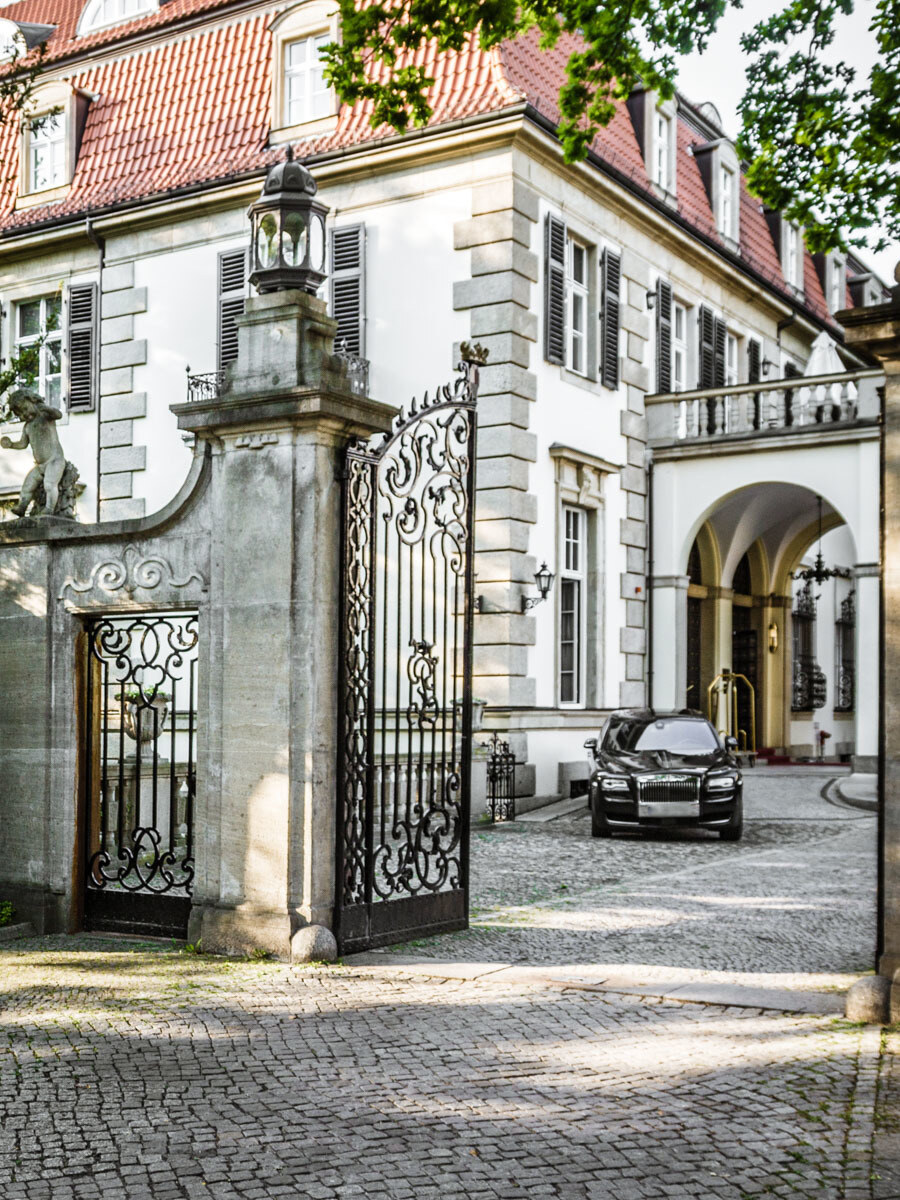
Grunewald
The laid-back one
The best thing about Berlin’s west is its lovely suburban residential areas. Grunewald with its splendid luxury villas is definitely one of the most coveted and most expensive locations in town. The 3,000 hectares of woodland it is named after is a popular destination for family outings, cycling and running. Much in demand are our spacious apartments in a beautiful mansion at Hagenplatz. Whoever manages to get a flat here is clearly out of the wood.
A surprise is hidden in the middle of the Grunewald Forest, a former US-operated listening station. Until the fall of the Berlin Wall, it was used by the Allied forces to eavesdrop on the East. At a height of 122 metres, the Teufelsberg was often called the last hill before Moscow. Its previous history is interesting: Up until 1945, it was the unfinished shell of the Wehrtechnische Fakultät, a military academy planned in the Nazi era. Designed by Albert Speer, the site was later demolished and buried under a mountain of rubble from the bombed city. Broken radar domes and wild graffiti artwork make the area a fascinating vantage point with a spectacular view over the Grunewald forest. The bizarre site is open to the public and is the largest street art gallery in Europe.
» The best thing about Berlin’s west is its lovely suburban residential areas. «
Westend
The athletic one
Berlin’s Westend is a middle-class residential area with good transport connections. Its streets are named after nut trees, acacias and elms, and it is as calm and green as that suggests.
A place worth visiting is the Olympic Stadium, one of the world’s most famous sports venues and home turf to Berlin’s football club, Herta BSC. It has also served as a stage for Helene Fischer and the Rolling Stones. Its monumental architecture reflects the spirit of Nazi megalomania. It was modelled after the Colosseum in Rome. In 1936 it hosted the Olympic Games, in 2006 the football world cup. A place of great emotions, seating a crowd of 75,000. A place of world records and gold medals, triumph and tragedy. Explore the stadium on your own or join a guided tour to look behind the scenes and take a look at the changing rooms and underground shelters called the “catacombs”, places which are not normally open to the public.
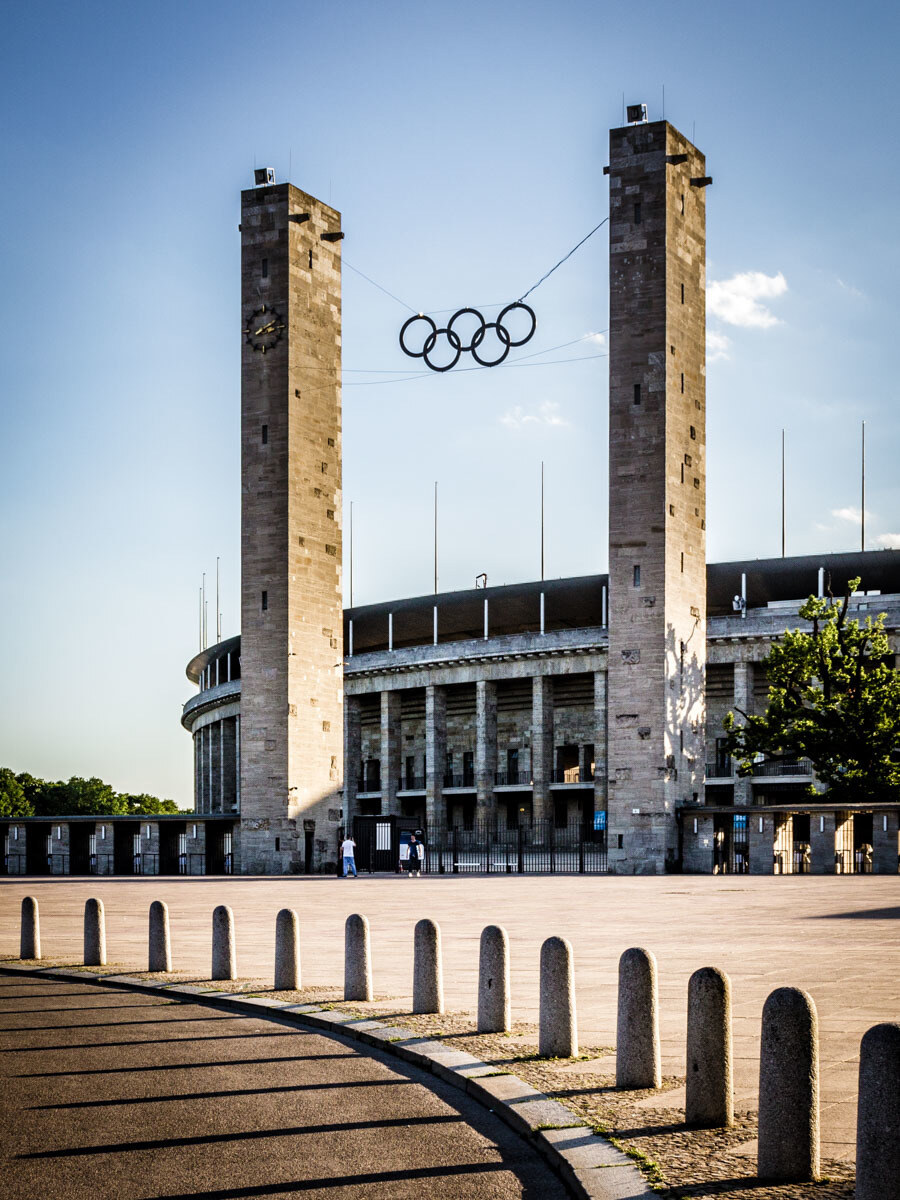
» The Olympic Stadium. A place of great emotions, world records and gold medals. «
An impressive modern building in Flatowallee, not far from the Olympic Stadium, is the Corbusierhaus. It was designed by the architect Le Corbusier for the 1957 International Housing Exhibition. He called it “a machine for living”, a vertical city. It is an impressive building with 530 flats on 17 floors. In it, coming home offers a number of apartments of various sizes. The most popular ones are the maisonettes that offer spectacular views of the Grunewald forest. It’s the perfect place for those who enjoy jogging in the morning.
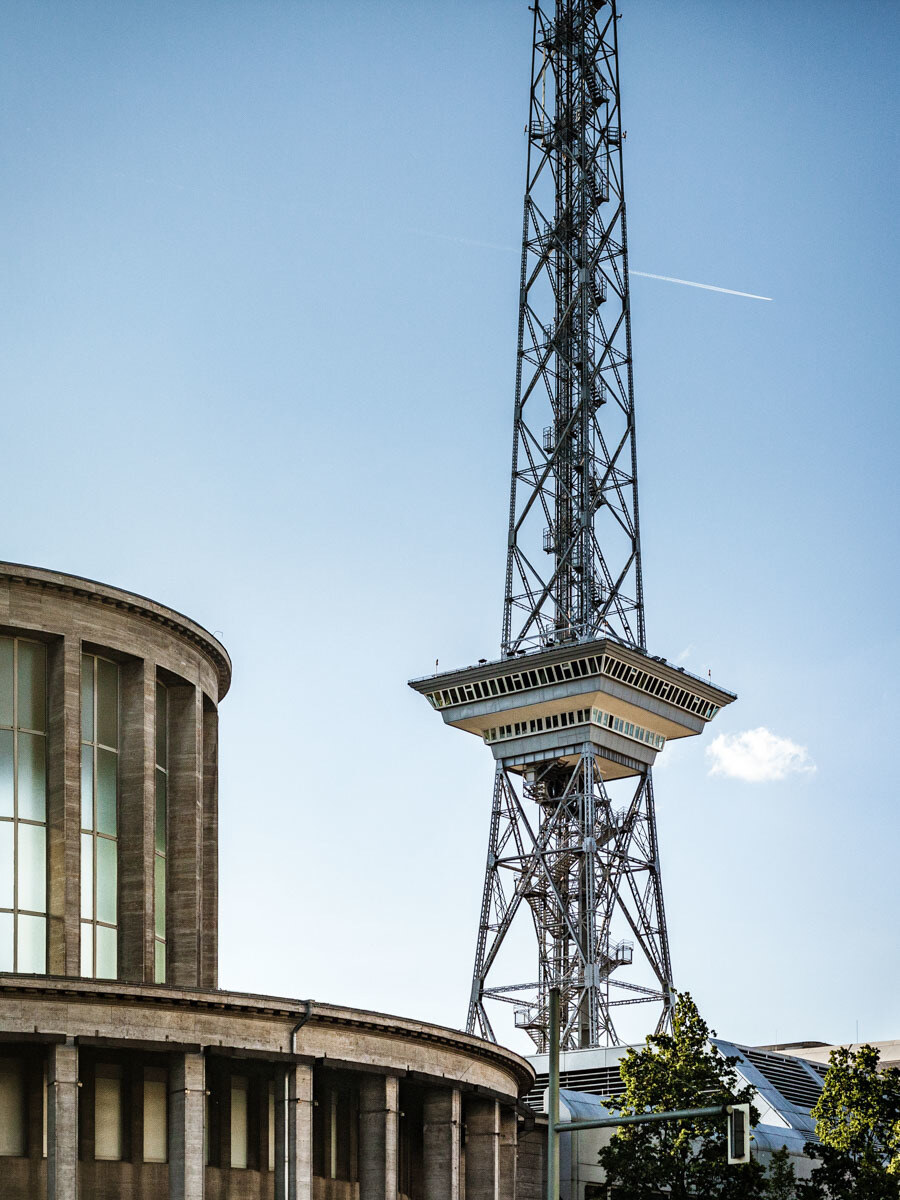
Halensee
The unknown one
The western end of Kurfürstendamm is not quite as impressive as the rest. It has a mixture of rental flats and villas. The rents are moderate, and the proximity to the Freie Universität has made Halensee increasingly attractive to younger people.
A sky-high symbol of Berlin is the radio tower on the exhibition centre - Berlin’s own little Eiffel Tower. It is from here that the first TV test signals were transmitted as early as 1929. The tower is now a listed building. Its 600-ton steel structure weathered a World-War-II grenade attack. Its restaurant and observation deck were re-opened in 1950. At a height of 125 metres it offers a magnificent panoramic view over the western part of the city.
» A sky-high symbol of Berlin is the radio tower on the exhibition centre - Berlin’s own little Eiffel Tower «
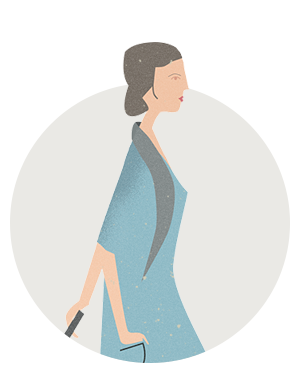
Renting an apartment – simple and secure
We at coming home will do our utmost to support and advise you. Our website provides you with a wealth of useful tipoffs for your apartment search, and tells you more about our free-of-charge services.
Infos for tenants
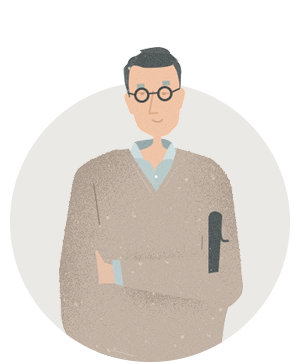
Secure lettings
If you wish to offer a furnished property for rent we are at your side throughout the tenancy process and ensure you get the best possible advice and support.
Infos for landlords

Magazine
Care to find out how other Berliners live? Read our series of personal home stories and get to know some extraordinary habitats and their creative residents in our magazine: “How people live Berlin”
Magazine
